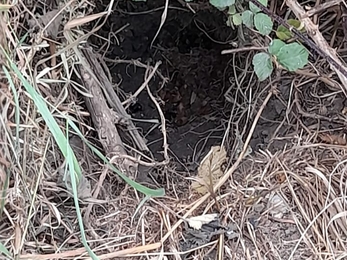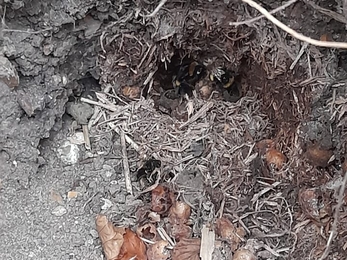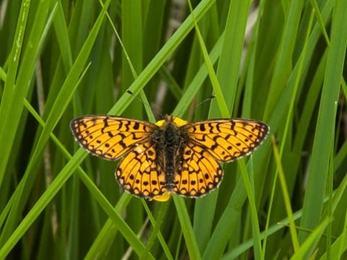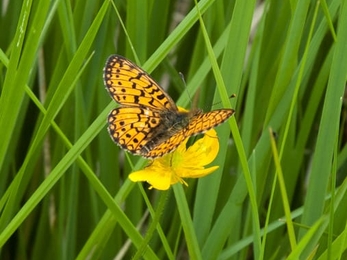Weekly wild news from our reserves – 22 July 22
Small pearl-bordered fritillary, Roy, Lound Lakes
Warden Gavin Durrant spotted the work of a badger alongside the main track at Carlton Marshes. It had been excavating a bumblebee nest for food. If you look closely, you can see the remains of the nest and several dead bees, but there are also bees rebuilding the nest in a tunnel at the bottom of the hole.
Making hay
North East Sites Manager Matt Gooch has been enjoying making hay while the sun shines at Oulton Marshes. Matt says, “Oulton Marshes is one of the most floristic marshes we have. It's kept that way by traditional grazing and hay management, although it’s a bit spongey under the tractor’s weight!”
Fire and floods
Matt, Lou and the team at Carlton Marshes had an eventful day on Wednesday 20th July where they were met with the twin challenges of fire and floods. The extremely hot, dry weather led to some grass and field fires, thankfully well controlled by the fire brigade. However, just an hour or so afterwards, a cloudburst caused flooding at the visitor centre. It’s a worrying sign of climate change and weather extremes.
The BBC covered the story here: https://www.bbc.co.uk/news/uk-england-suffolk-62250116
Butterfly bliss
Andrew Hickinbotham was delighted to be sent these images of a butterfly by Roy, a volunteer warden at Lound Lakes. Andy explains, “Wardens are often sent images to identify, but today’s photos were extra-special as this butterfly is the first sighting in Suffolk in well over 50 years. The butterfly is a small pearl-bordered fritillary and the closest colony died out in Norfolk in the 1970s. This one was either a wind-blown migration butterfly or from an unknown release. Either way, it’s special and takes Lound Lakes Reserve to a total of 27 butterfly species this year.”
Increasingly common comma
Trimley warden Joe Underwood spotted this spiney-looking caterpillar – a comma butterfly. Commas are one of the species of butterflies that are expanding their range due to climate change. The caterpillars like to feed on stinging nettles, but adults will also lay eggs on species of willow, currant, elm and hops.
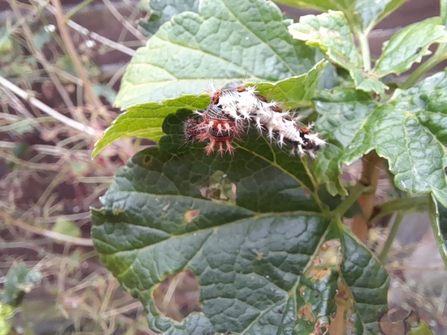
Comma caterpillar, Joe Underwood, July 22

